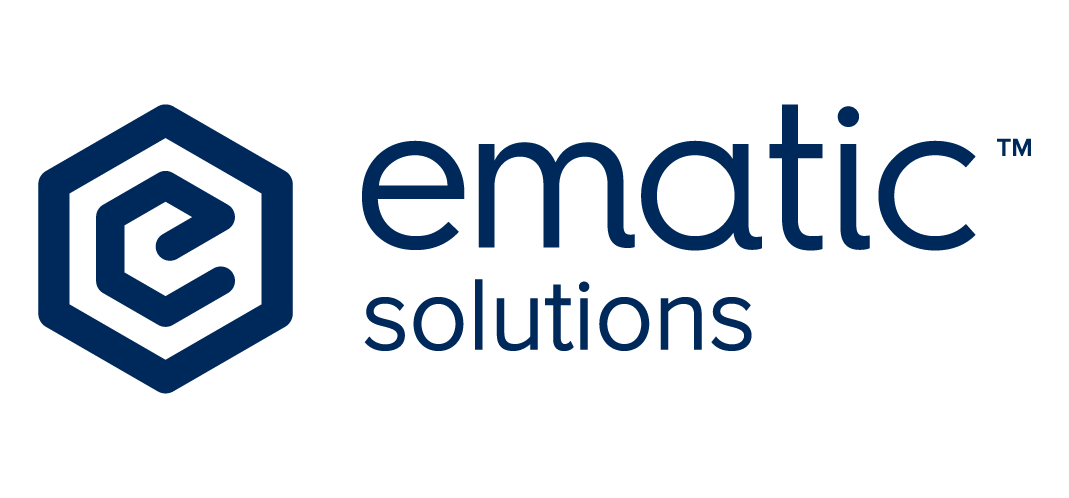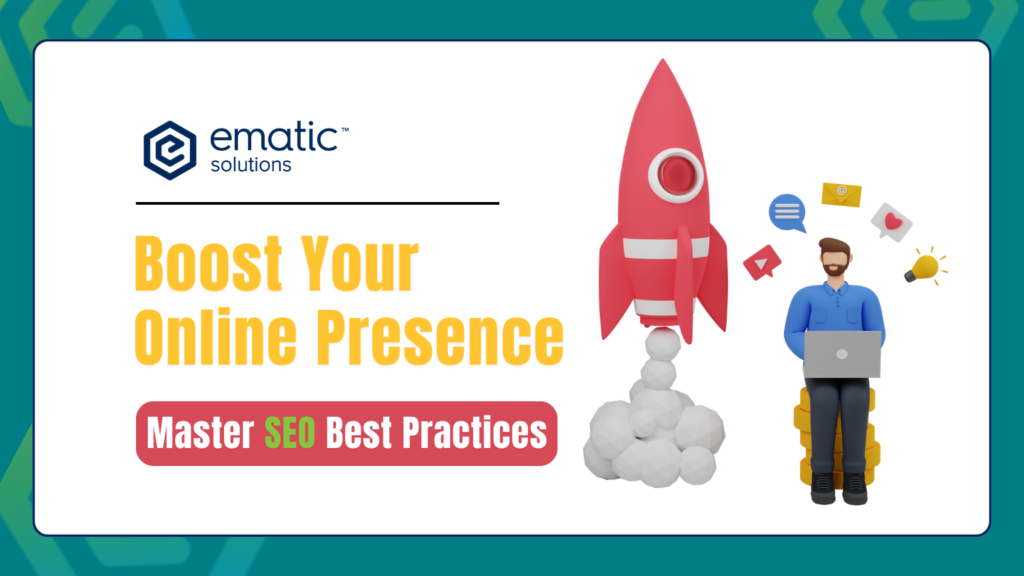As a businessperson in this digital era, learning the art of search engine optimization (SEO) is critical to fostering a strong online presence. Search engines process over 3 billion searches every day, and it has been a very important thing to know how to optimize your content for a better ranking. This article is here to inform you about SEO best practices in 2024, so you can move through an ever-evolving landscape that includes search engine algorithms.
1. Understand User Intent
Before getting into the more nitty-gritty details, it is important to understand the concept of user intent. The truth is that search engines like Google have become really good at understanding what a user is really looking for when they type in a query.
There are four key types of user intent:
- Informational: The user is looking for information (e.g., “how to optimize for search engines”).
- Navigational: The user wants to go to a specific website (e.g., “Facebook login”).
- Transactional: The user is looking to make a purchase (e.g., “buy iPhone 14”).
- Commercial Investigation: The user is researching before making a purchase (e.g., “best laptops 2024”).
Align the intent you’re targeting with your content. For instance, in the case of an informational query, your content should be educative with detailed information.
Consider the keyword “what is whey protein made of.” This keyword clearly indicates an informational intent, as search results primarily display articles that educate users on advantage and disadvantages of whey protein. By understanding user intent first, you can choose the right keywords to target, ensuring your content is relevant and valuable to your audience.
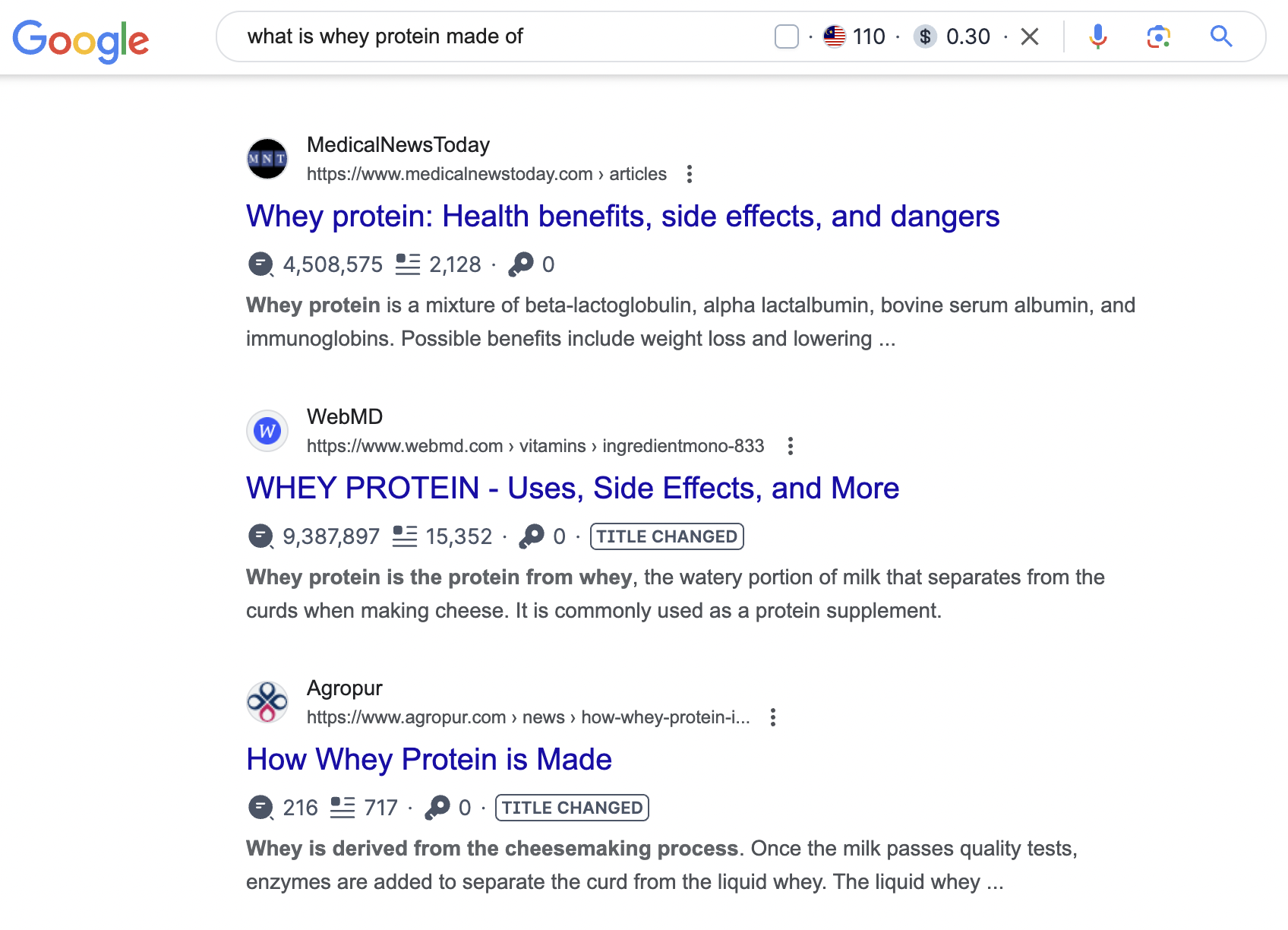
2. Carry out extensive keyword research
Keywords are basically the base of SEO: terms and phrases people type in to look for information on the web. Good keyword research is what allows you to find out about your audience—what they are looking for and how you can write your content to meet their requirements.
Recommendation to conduct keyword research:
- Use Tools: Use all possible keyword research tools such as Google Keyword Planner, SE Ranking, SEMrush, and Ahrefs to choose high-traffic, low-competition keywords.
- LSI Keywords: Use search engine-related keywords that will help the search engine determine the context of your content.
- Competitor Research: Analyze your competitors to discover the keywords they are ranking for. This can give you insights into keyword opportunities you may have missed and help you refine your strategy.
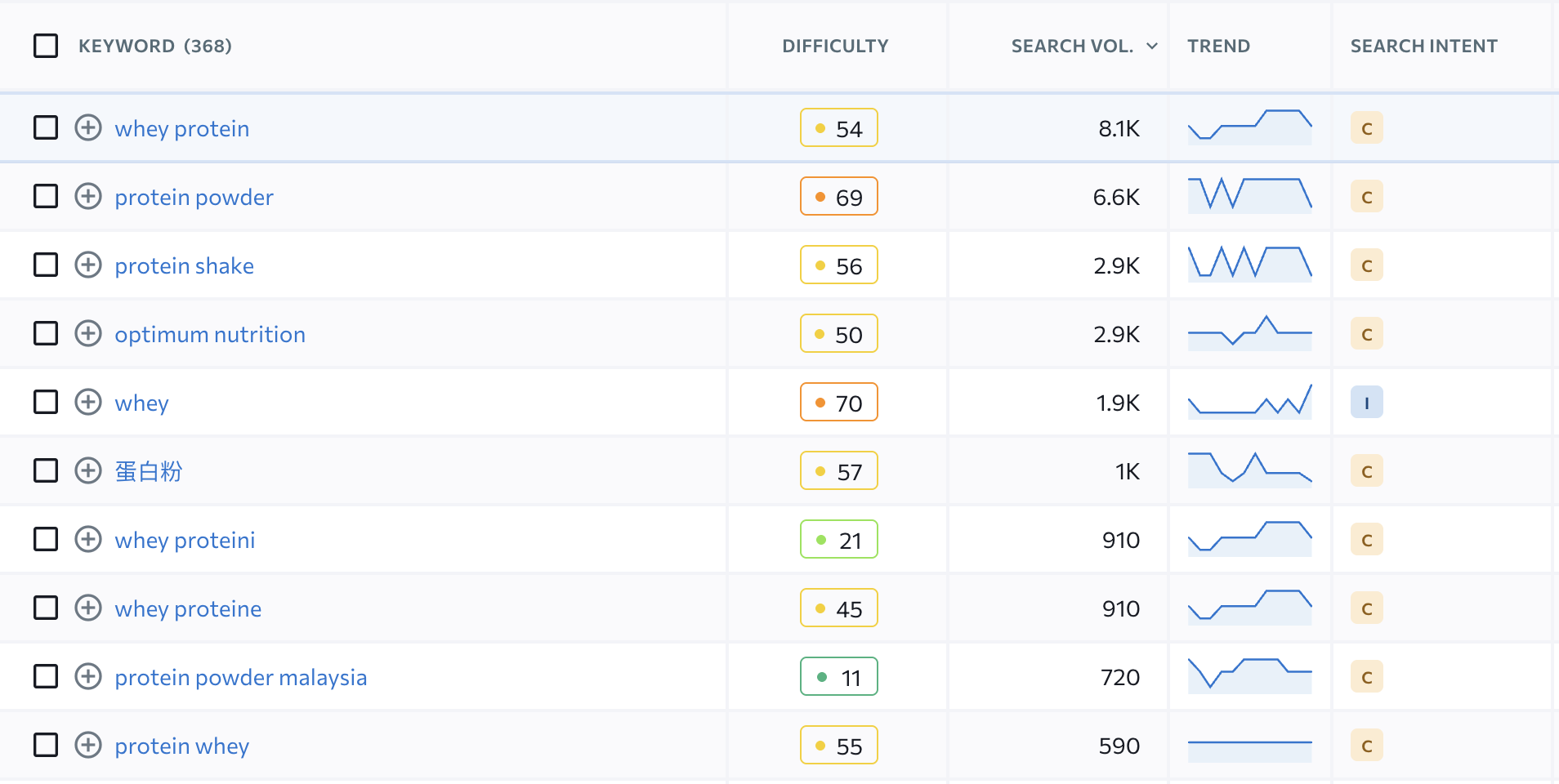
If you utilize keyword research tools, it becomes significantly easier to analyze all relevant keywords, along with their associated metrics. These tools provide valuable insights, such as search volume, search intent, and related keywords, allowing you to make informed decisions about which keywords to target. By understanding this data, you can effectively optimize your content strategy to better meet your audience’s needs and improve your search engine rankings.
3. Optimize On-Page Elements
On-page SEO is a practice in which one can optimize individual web pages to get higher and relevant traffic within SERPs. Let me take you through the most prominent on-page elements.
- Title Tags: Ensure the title tag is 50-60 characters long. Preferably, the target keyword is present somewhere at the start.
- Meta Descriptions: Write an appealing meta description, 150-160 characters long, including the keyword, intended for the readers so that they want to click.
- Headers: Use H1, H2, H3 tags to format your content. Use your main keyword in H1, while you break down sections using H2s and H3s with secondary keywords.
- URL Structure: Keep URLs short and descriptive and always try to put in some keywords to them.
- Internal Linking: Try to link to other relevant pages from your website; it’s going to act like a boost for SEO as well as user navigation.
Make sure each content piece is optimized for a primary keyword, and secondary keywords are naturally included in the text.
4. Create High-Quality, Engaging Content
Content is king in the world of SEO. High-quality content brings people to your website and gets them to stick around. That’s going to lower the bounce rate and increase your ranking in searches.
Advice:
- Value-Driven Content: Focus on creating real value-driven content that solves a problem, answers a question, or provides insight.
- Multimedia: Include images, videos, infographics, and multimedia that would bring charm and interest.
- Regular Updates: The evergreen content has to be fresh all the time from the alteration of the industries.
5. Enhancing the Speed of Your Site and Mobile
Google has clearly signaled that it considers site speed and mobile friendliness as two primary elements in rankings. High bounce rates may hurt your SEO if you have a slow and clunky website.
Action Point:
- Page Speed: Use tools like Google PageSpeed Insights to analyze your website’s speed and pick out areas where you might improve in terms of activities like image compression or minimizing JavaScript. Need more information? Here’s an article about Google PageSpeed that you can read!
- Mobile Optimization: Ensure your website is fully responsive and offers a seamless experience on mobile devices. Google’s mobile-first indexing means the mobile version of your site is the primary version.
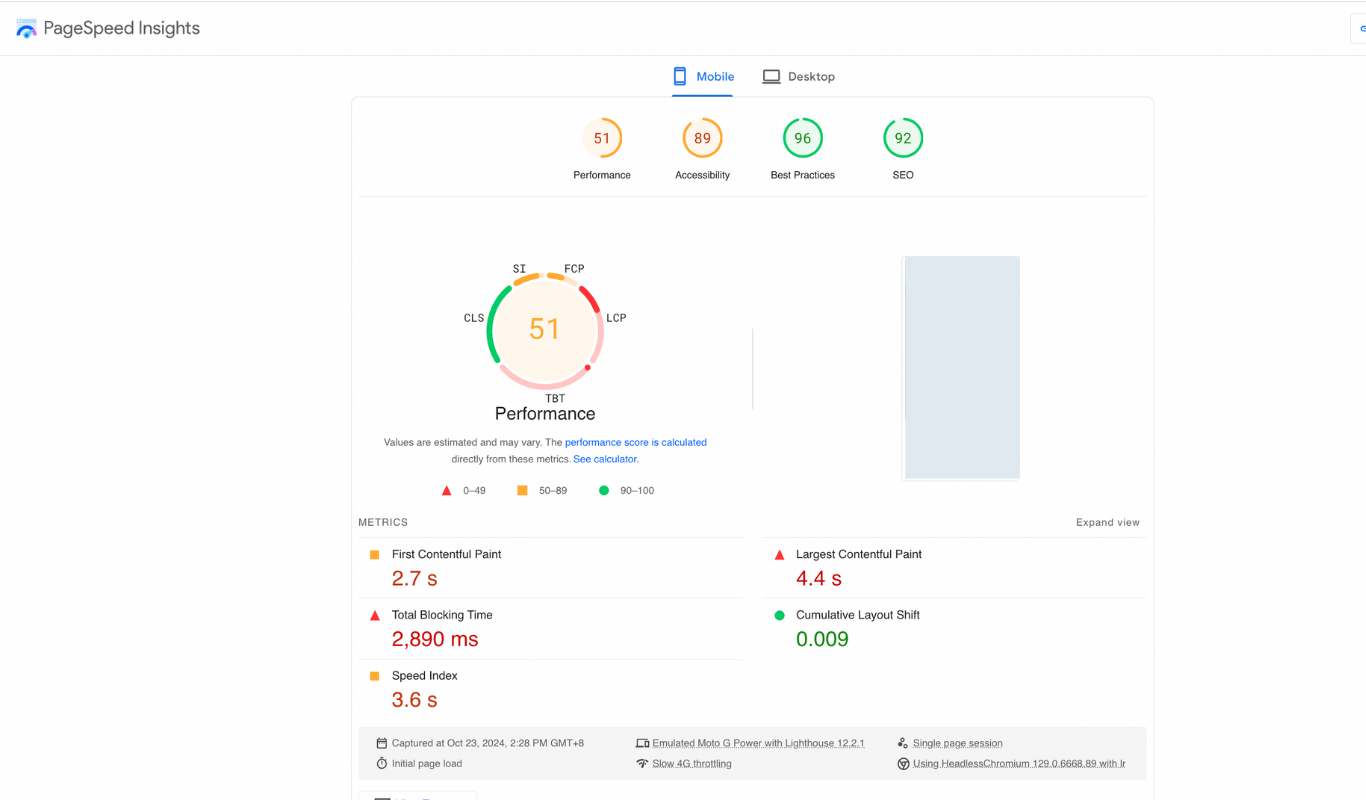
6. Look into Technical SEO
Technical SEO is the optimization of the infrastructure of your website to make it easy for search engines to crawl and index your content. Even though this may sound highly sophisticated, it plays an indispensable role in improving the visibility of your site.
- XML Sitemap: Be sure to create and submit an XML sitemap to search engines, so they can find and index your content easily.
- Robots.txt: Lead the search engine on which pages they should not crawl by using a robots.txt file. Make sure to include a reference to your XML sitemap within the robots.txt file for better indexing.
- SSL Certificate: Secure your site with HTTPS because security is one of the ranking factors for Google.
- Canonical Tags: Arouse no issues of duplicate content that might arise as a consequence of baffling search engines and suffusing ranking potential.
- Redirection: Implement proper 3xx redirects for any moved or deleted pages to ensure users and search engines are directed to the correct content, preserving your site’s authority and ranking.
- Structured Data (Schema Markup): Implement schema markup to provide additional context about your content, such as product information, reviews, and business details.
7. Build Quality Backlinks
Still one of the top-ranking factors is backlinks—these inbound links are from other websites. However, backlinks shouldn’t be done in quantity; they should have quality.
Approach:
- Approach to Guest Blogging: Reach out and write guest posts for high-authority sites in your industry. Reach out to websites, bloggers, and influencers within your niche, building relationships with them, and eventually ask for or earn links to your content.
- Content Marketing: Build linkable assets—create original research, infographics, in-depth guides, etc.—that other people will naturally want to reference and link to.
8. Use Analytics and Monitoring Tools
SEO isn’t something you do just once; it’s ongoing and something you must keep doing to stay ahead of the game.
SEO tools suggestion:
- Google Analytics: Measure your website performance, where your traffic sources are, user behavior, and conversion rates.
- Keep monitoring search performance through Google Search Console: You will find in-depth details about the keywords your site is ranking for and technical issues that could be impacting SERPs.
- Leverage SEO Tools: Use SEO tools regularly to check an audit, track keyword ranking, and study your competition.
9. Optimize for local SEO
It is a must to implement local SEO if you have brick-and-mortar stores.
Guideline:
- Google My Business: Create a business listing with your Google My Business account. Be sure to optimize it correctly by providing the proper information, pictures, and reviews from customers.
- Add Local Keywords: Introduce location-based keywords in your site content and meta tags.
- Maintain NAP Consistency: Ensure that your Name, Address, and Phone Number are consistent across all your websites and directories.
Final Thoughts
Search engine optimization is an ongoing and dynamic process. Practice the abovementioned best practices, and visibility on your website will increase, traffic will improve, and ultimately ranking on search engines will be better.
Remember, the secret of really good SEO is not in observing the rules but in really understanding your audience and creating content that truly gets them. Keep improving your strategies, updated with the latest trends in SEO, and watch your online presence grow.
Want to see how your website is performing in search results? Contact us for a free website audit!
